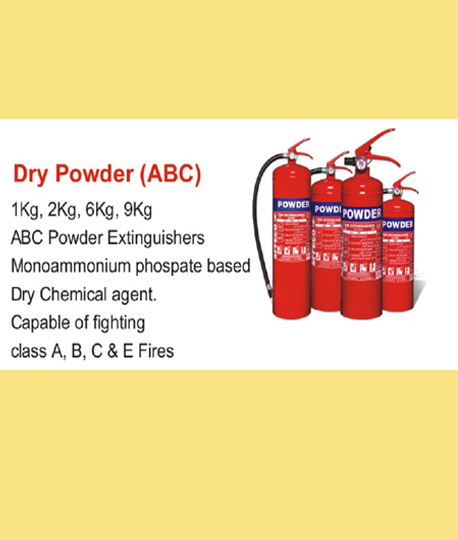Fire Fighting Sytems





Fire fighting systems & equipment vary depending on the age, size, use & type of building conctruction. A building may contain some or all the following features
Fire extinguishers
Fire hose reels
Fire hydrant Systems
Automatic sprinkler systems
1. Fire Extinguishers : are provided for a first attrack fire fighting measure before the fire service arrives. Most fire starts as a small fire & may be extinguished if the correct type and amount of extinguishing agent is applied whilst the fire is small & controllable like water (for wood or paper fires - not electrical ) foam (flammable liquid fires - not electrical) carbondioxide (electrical fires) dry chemical (flammable liquids & electrical fires) wet chemical (fat fires -not electrical) special purpose (various eg. metal fires)
Carbon Dioxide (CO2)
2Kg, 5Kg, 6Kg & 22.5Kg
Alloy Steel Material CO2
Extinguishers. Grip type valve.
Dry Powder (ABC)
1Kg, 2Kg, 6Kg, 9Kg
ABC Powder Extinguishers
Monoammonium phospate based
Dry Chemical agent.
Capable of fighting class A, B, C & E Fires
Water
9L Water, CO2, Fire Extinguishers
Epoxy Coated Diaphragm pressure
Gauge with EN3 Approval
Foam
6L 3% AFFF,
9L 3% AFFF
2. Fire Hose Reels : are provided for use by occupants as a first attack fire fighting measure. When showing a fire hose reel, it is importent to first attach the nozzle end to the hose reel vallve, the close the hose reel valve, then open the nozzle to relieve any pressure in the wound hose, then close the nozzle. This achieves two principle objectives. A depressurised hose & hose reel seal will last longer than if permenently pressurised. When the hose reels is next used, the operator will be forced to on the isolating valve, thus charging the hose reel with pressurised water supply, before being able to drag the hose to the fire. A potential danger exists if the operator reaches the fire and finds no water is available because the hose reel valve is still closed. because hose reel are generally located next to an exist, in an emergency it is possible to reach a safe place simply by following the hose.
3. Fire Hydrant Systems : are installed in buildings to help fire fighters quickly attack the fire. Essentially a hydrant system is a water reticulation system used to transport water in order to limit the amount of hose that fire fighters have to lay, thus speeding up the fire fighting process.
Fire hydrants are for the sole use of trained fire fighters. Because of the high pressures available serious injury can occur if untrained persons attempt to operate the equipment connected to such installations
.
4. Safety : PPE (Personal Protective Equipment)
5. Automatic Sprinkler Systems : Time is essential in the control of fire. Automatic sprinkler systems are one of the most reliable methods available for controlling fires.
A sprinkler head is really on automatic tap. It is connected to a pressurised water system. when the fire heats up the sprinkler heed, it opens at pre-set temperature, thus allowing pressurised water to be sprayed both down on to the fire and also up to cool the hot smoky layer and the building structure above the fire. This spray also wets combustible material in the vicinity of the fire, making, if difficult to ignite, there by slowing down or preventing fire spread and growth.
